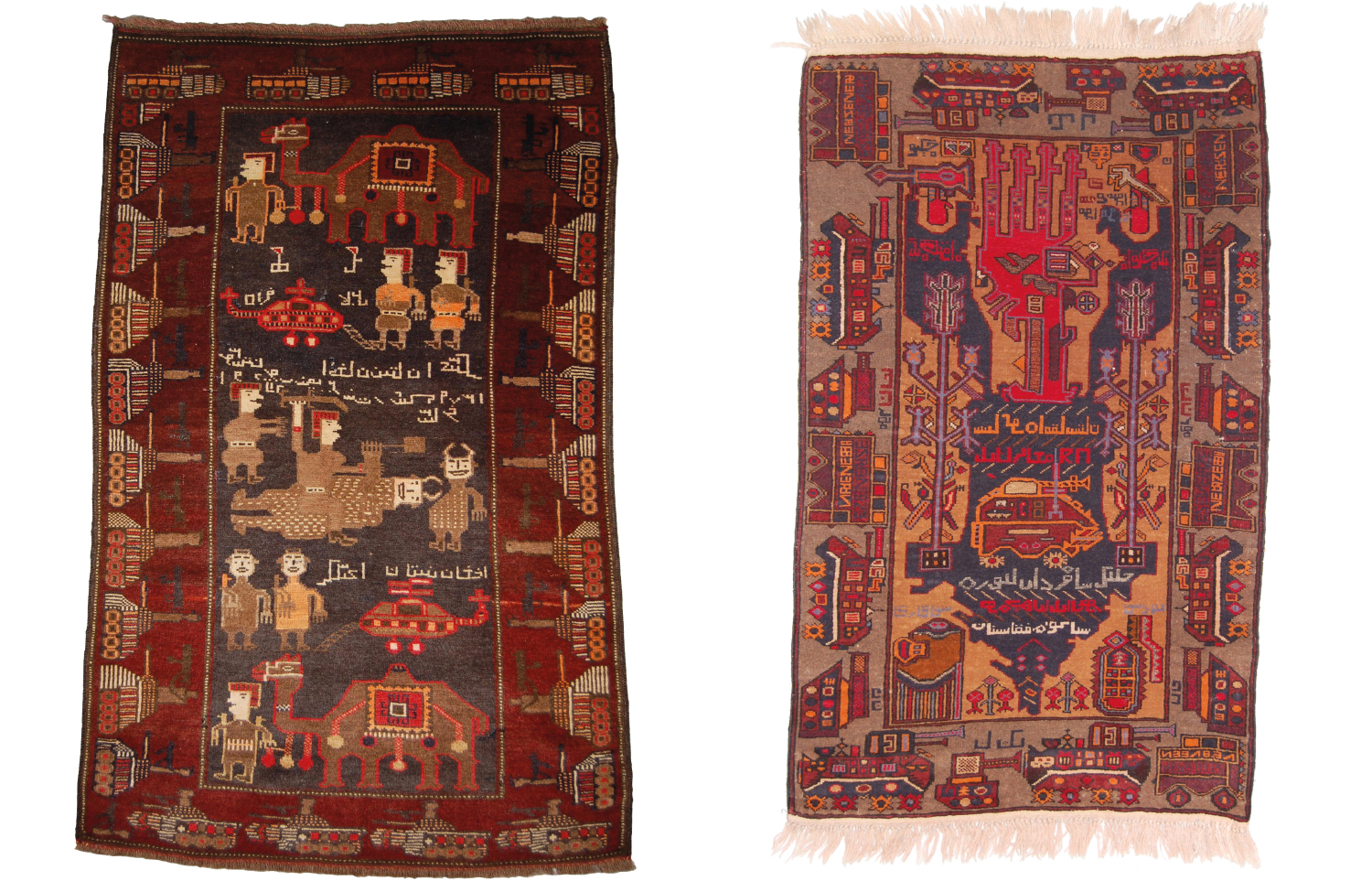Decades after its inclusion in the Hippie Trail, Afghanistan is again open to tourism, according to the Taliban’s spokesman Zabihullah Mujahid. It is perhaps a source of regret for the group that the 6th-century Buddhas of Bamiyan are missing in action. They were blown up in 2001 either, depending on who you ask, because of Islam’s strict beliefs on anti-idolatry or to punish the West for offering money to preserve them rather than give aid to starving children.
The war rugs, depicting camels and flowers alongside rocket launchers, are striking and jarring
While the country continues to export fruit, nuts and insect resins – opium production was massively scaled back by the Taliban – Afghanistan is justly famous for its woven rugs. War rugs are a curiosity within this craft, fusing traditional weaving with military motifs: bombs, tanks, grenades, helicopters and, more recently, drones. They’re not a new phenomenon. The rugs began appearing after the Soviet invasion of Afghanistan in 1979, which precipitated the protracted, decade-long conflict between the US-backed Mujahideen and the communists that saw millions of Afghans killed and displaced.

Get Britain's best politics newsletters
Register to get The Spectator's insight and opinion straight to your inbox. You can then read two free articles each week.
Already a subscriber? Log in







Comments
Join the debate for just £1 a month
Be part of the conversation with other Spectator readers by getting your first three months for £3.
UNLOCK ACCESS Just £1 a monthAlready a subscriber? Log in